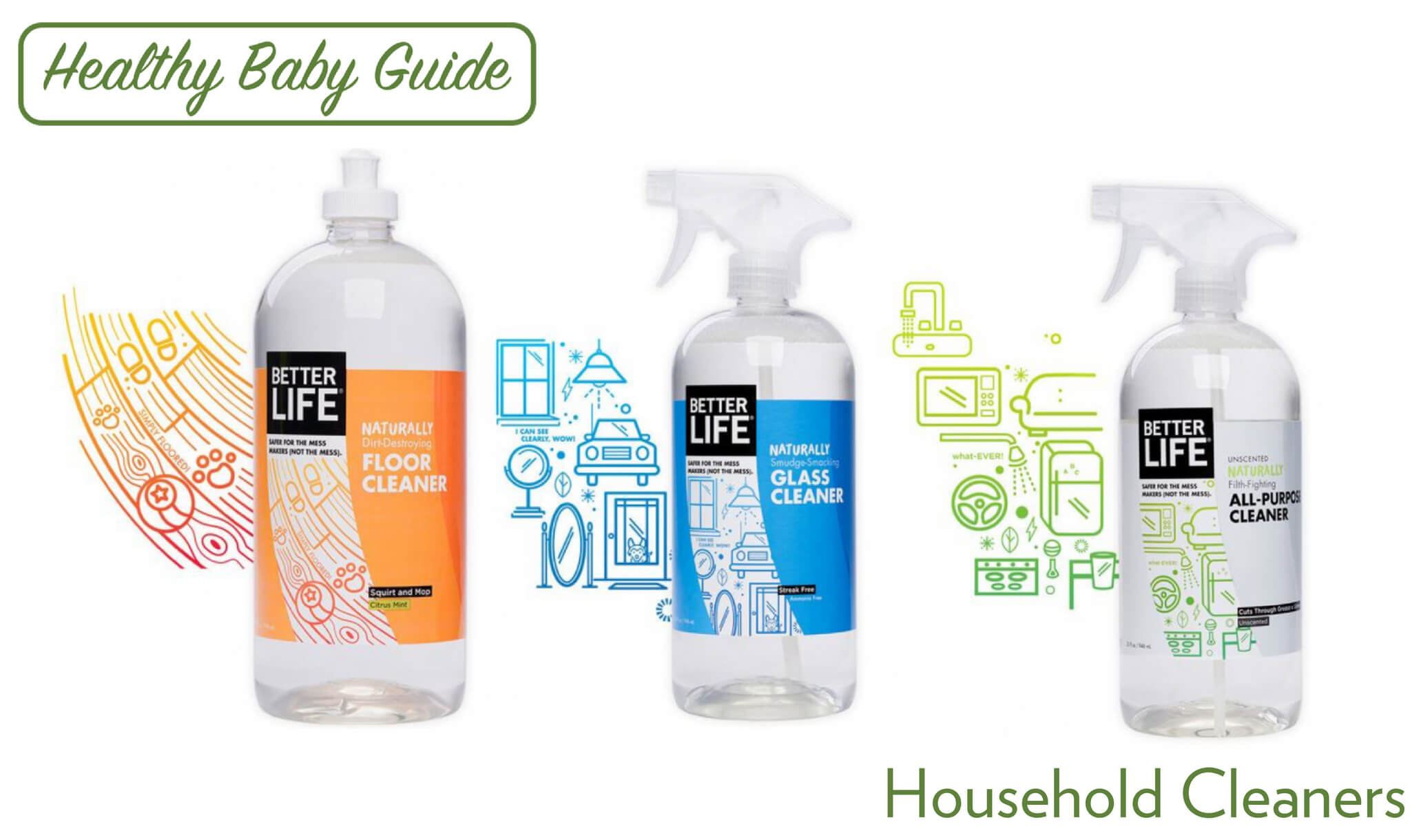Healthy Baby Guide to Household Cleaners
Keeping your baby’s nursery clean is vital to creating a safe and healthy place for your little one to play and sleep. Babies, with their developing lungs, are much more sensitive to their environment. Our Household Cleaners Healthy Baby Guide is here to help you! To keep the air in your home healthy, look for natural household cleaners made with plant-based ingredients.
What You Should Know:
Manufacturers are not required to list the ingredients of household cleaners on the products. Many household cleaners contain toxic chemicals such as formaldehyde and harsh acids. For this reason, the EPA has found the air quality in our homes to be 2–5 times more toxic than the air outside. To keep the air in your home healthy for your child, use natural household cleaners made with plant-based ingredients.
Ingredients to Avoid Include:
- Alkyl Phenoxy Polyethoxy Ethanol – Found in laundry detergents and all-purpose cleaners. Researchers in England have found that in small amounts these chemicals activate estrogen receptors in cells, including stimulating the growth of breast cancer cells in animals.
- Benzalkonium Chloride – Of the group known as “quats” – potent immunological adjuvants, compounds that accentuate the immune response to antigens, chronic exposure to aerosolized immune adjuvants in an enclosed space would be expected to increase the immune response to common environmental antigens including dust, molds, and others, which could lead to asthma attacks and allergies. A study by Virginia Tech and Washington State University researchers has found that exposure to quats can lead to birth defects in laboratory animals that can last for generations.
- Benzene – Found in detergents and spot removers and is classified by the International Agency for Research on Cancer as a carcinogen. It is also listed on the EPA’s Community Right-To-Know list and is listed in the 1990 Clean Air Act as a hazardous air pollutant.
- Butyl Cellosolve – Found in spray cleaners and all-purpose cleaners. It is a synthetic solvent that can irritate mucous membranes and is thought to cause liver and kidney damage and to depress the central nervous system.
- Chlorine – Found in bleach, dishwasher detergent, and tile cleaners. It is listed on the EPA’s Community Right-To-Know list and is listed in the 1990 Clean Air Act as a hazardous air pollutant. Chlorine was used as a poison in WWI.
- Crystalline Silica – Found in all-purpose cleaners and bathroom cleaners. It is thought to be a carcinogen that also irritates the eyes, skin, and lungs.
- Formaldehyde – Found in deodorizers, disinfectants, adhesives, and particleboard. Formaldehyde has been shown to cause cancer in animals. It is also a respiratory irritant and high concentrations may trigger attacks in people with asthma.
- Phosphoric Acid – Found in bathroom cleaners. It is listed on the EPA’s Community Right-To-Know list and is listed in the 1990 Clean Air Act as a hazardous air pollutant. OSHA, the Occupational Safety and Health Administration, regulates the amount allowed in the workplace to protect workers.
- Trisodium Nitrilotriacetate (NTA) – Found in laundry and dishwasher detergents, stain removers, and carpet treatments. NTA was listed as a suspected human carcinogen California’s Proposition 65, Workers’ Right-to-Know legislation.
Related Articles:
Cleanwell Founder on Household Cleaners
Read All Our Healthy Baby Guides.


